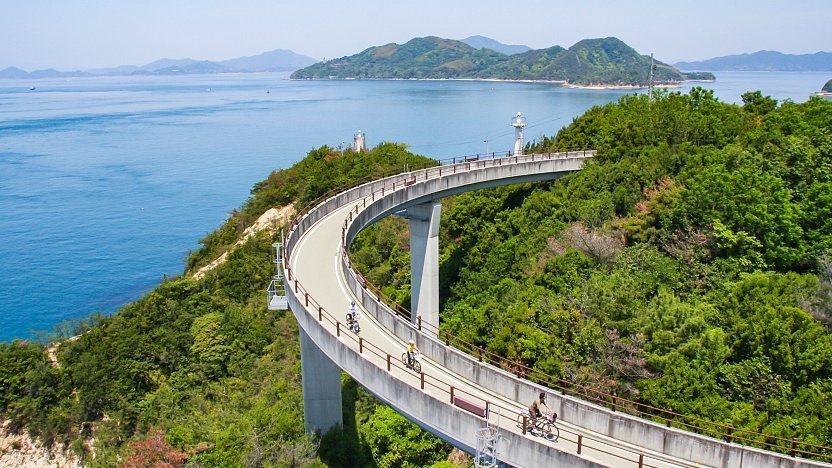
31 Jul Leveraging Infrastructure to Support Responsible Tourism
What if the key to responsible tourism isn’t just how travelers behave, but what they walk on, ride in, or sleep in?
From remote hiking shelters in Wales to island-hopping bike trails in Japan and car-free mountain villages in Switzerland, the right infrastructure doesn’t just support tourism, it shapes it.
In the race to balance tourism growth with environmental and social sustainability, infrastructure is often overlooked. Yet thoughtful infrastructure, backed by sound policy and long-term community planning, is one of the most powerful tools DMOs can use to promote responsible travel. Whether it’s a quiet hiking hut, a car-free mountain village, or a scenic bike trail that weaves through rural communities, infrastructure shapes the traveler’s experience and their behavior.
Make Access Part of the Adventure
The UK’s Network of Free Bothies is run by the UK’s Mountain Bothy Association (MBA), maintaining over 100 “bothies” which are free-to-use shelters in remote areas, offering minimal comforts but maximum connection to nature. There are no bookings, no fees, and limited information, but a shared code of conduct guides respectful use.
Tips for DMOs
- Promote and support low-impact infrastructure like bothies, huts, or lean-tos in remote or under-visited areas.
- Collaborate with local nonprofits or outdoor associations to maintain infrastructure using volunteer power.
- Encourage wellness tourism by showcasing infrastructure that limits Wi-Fi, electricity, or modern amenities in favor of nature immersion.
Create Infrastructure That Slows People Down
Japan’s Shimanami Kaido Bike Trail is a 70km bike route across six islands in Japan’s Seto Inland Sea. Built alongside an expressway, the route turns what was once a transit corridor into a slow-travel experience, connecting travelers to fishing villages, citrus farms, and historic shrines.
Tips for DMOs
- Develop wayfinding systems and interpretation that spotlight local heritage, food, and nature along the route.
- Market the journey as the destination. Promote itineraries that encourage overnight stays, local dining, and small-scale spending.
- Advocate for national or regional designation (like Japan’s “National Cycling Route”) to attract funding and credibility.
Use Policy & Infrastructure to Shape Visitor Flow
Mürren, Switzerland’s Car-Free Alpine Village is accessible only by train and cable car. With sweeping mountain views and a walkable layout, Mürren limits vehicle congestion, reduces emissions, and preserves the tranquil atmosphere that draws travelers in the first place.
Tips for DMOs
- Work with local or national governments to create car-free zones or implement transport restrictions in sensitive areas.
- Promote access by public transit, cable car, or rail as part of the experience.
- Develop transport passes or bundled ticketing that make sustainable options easy and attractive for visitors.
Final Tip: Start with the “Why” and Design the “How”
In all three cases, infrastructure reflects a deeper intent: protecting nature, supporting local communities, and shaping positive visitor behavior. Whether rustic or refined, infrastructure is never neutral. It either reinforces sustainable goals or undermines them.
For DMOs, the challenge is to curate a system from policy to promotion that ensures it aligns with responsible tourism values.
- What kind of travel behavior do we want to encourage?
- What infrastructure supports that behavior and what policy reinforces it?
- How can we turn infrastructure into a story about care, connection, and shared responsibility?

